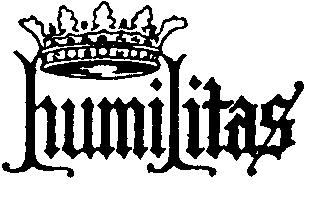V. THE MAN OF WILL
"The forward progress of ideas is excruciatingly slow, especially when they clash with personal interests and passions, but is relentless when they are right and truly useful. So we must persevere, because no matter how slowly the goal will be reached, provided weakness does not overcome those who are its champions" (Scalabrini, Address on Emigration).
Scalabrini was at the same time a man of will and of action.
Witnesses at the diocesan proceedings (for his Beatification) have testified that, once he had decided to do something he considered good and necessary, nobody and nothing could sway him or slow him down. In this he imitated his model, St. Charles. Scalabrini’s description of St Charles to his Missionaries, as "a man of action, with no divided loyalties and who never retreated, a man of active will and fearless constancy, provides a remarkable portrait of himself.
Scalabrini may not have been number one, but he was certainly a whole number; a man who always went to the limits, with a firmness of purpose capable of delivering him of any paralyzing form of prejudice, habit, tiredness or fear. And he drew the secret of this absoluteness from his intense relationship with the "One at the top of the ladder (Scala)" found on his coat of arms as bishop.
His will was motivated by a great love of God and of souls, and backed by an intense ascetical life which did not disdain voluntary penances and prayers to which he was unfailingly faithful, to the point of binding himself to a daily half hour of meditation under pain of serious sin.
His "devotion" ascended to God mainly on the wings of will and heart, but was constantly nourished by personal devotions, visits to the Blessed Sacrament, the practice of the presence of God, spiritual exercises, etc. Nothing extraordinary here, simply an extraordinary fidelity to the ordinary means of Catholic tradition.
His little book of resolutions says that he carefully monitored his heart, made clear and precise resolutions, evaluated and made use of every means of "arousing devotion."
 Among the devotions that nourished his devotion, those to the Most Blessed Sacrament and to the Mother of Jesus stand out the most. With regards to the first we should recall that true monument to his piety which is the third synod fully
Among the devotions that nourished his devotion, those to the Most Blessed Sacrament and to the Mother of Jesus stand out the most. With regards to the first we should recall that true monument to his piety which is the third synod fully dedicated to the Eucharist, which he, on the threshold of the new century, wanted as "a sign of hope" for the whole world. We know that he spent the night before his fatal surgery in adoration before the Blessed Sacrament.
dedicated to the Eucharist, which he, on the threshold of the new century, wanted as "a sign of hope" for the whole world. We know that he spent the night before his fatal surgery in adoration before the Blessed Sacrament.
With regard to devotion to Our Lady, we recall that his last religious ceremony was the crowning of Our Lady of the Castle at Rivergaro with a crown studded with his mother’s jewels. He prayed the Rosary every day, and, according to his master of ceremonies, when travelling on foot during his pastoral visits, he would step aside from the group to recite the rosary.
Special mention is due to his devotion to the Patron Saints of the diocese, the city, and individual parishes, promoting such devotion from the very start of his ministry in the Diocese of Piacenza with the recognition of the relics of the Patron Saints. This form of piety anchors the faith to a living, heroic tradition, reminding it of how much "it has cost," reminding it of its roots and the duty to bear witness. For example, he would always tell migrants of the need to preserve the faith of "their ancestors."

